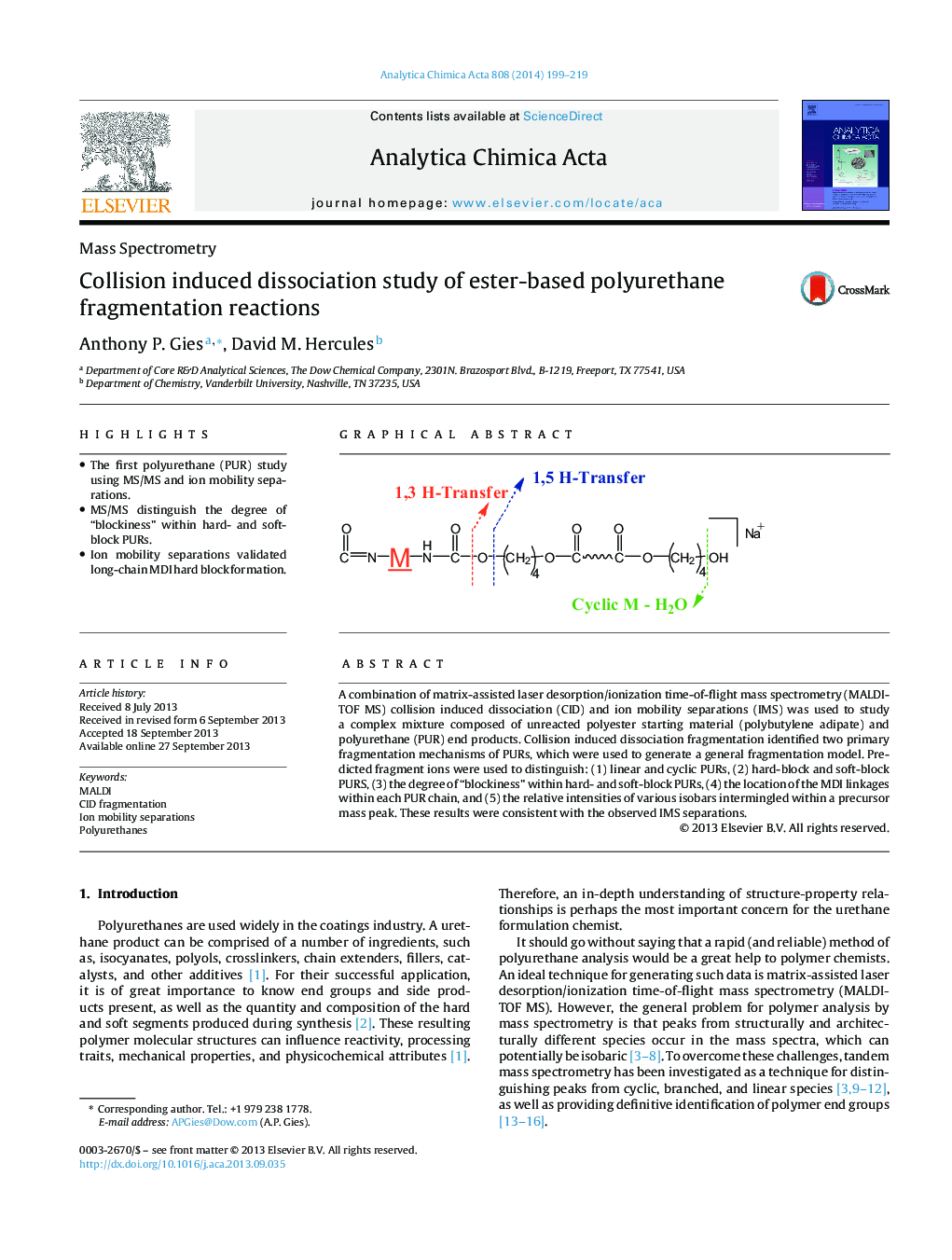| Article ID | Journal | Published Year | Pages | File Type |
|---|---|---|---|---|
| 1164442 | Analytica Chimica Acta | 2014 | 21 Pages |
•The first polyurethane (PUR) study using MS/MS and ion mobility separations.•MS/MS distinguish the degree of “blockiness” within hard- and soft-block PURs.•Ion mobility separations validated long-chain MDI hard block formation.
A combination of matrix-assisted laser desorption/ionization time-of-flight mass spectrometry (MALDI-TOF MS) collision induced dissociation (CID) and ion mobility separations (IMS) was used to study a complex mixture composed of unreacted polyester starting material (polybutylene adipate) and polyurethane (PUR) end products. Collision induced dissociation fragmentation identified two primary fragmentation mechanisms of PURs, which were used to generate a general fragmentation model. Predicted fragment ions were used to distinguish: (1) linear and cyclic PURs, (2) hard-block and soft-block PURS, (3) the degree of “blockiness” within hard- and soft-block PURs, (4) the location of the MDI linkages within each PUR chain, and (5) the relative intensities of various isobars intermingled within a precursor mass peak. These results were consistent with the observed IMS separations.
Graphical abstractFigure optionsDownload full-size imageDownload as PowerPoint slide
